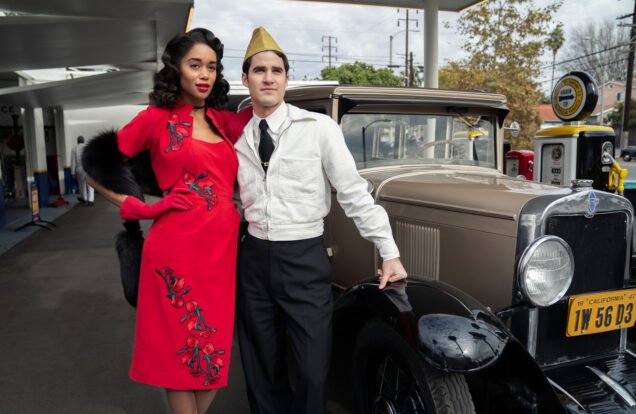TWICE UPON A TIME
Ryan Murphy and Tarantino Play with the Truth
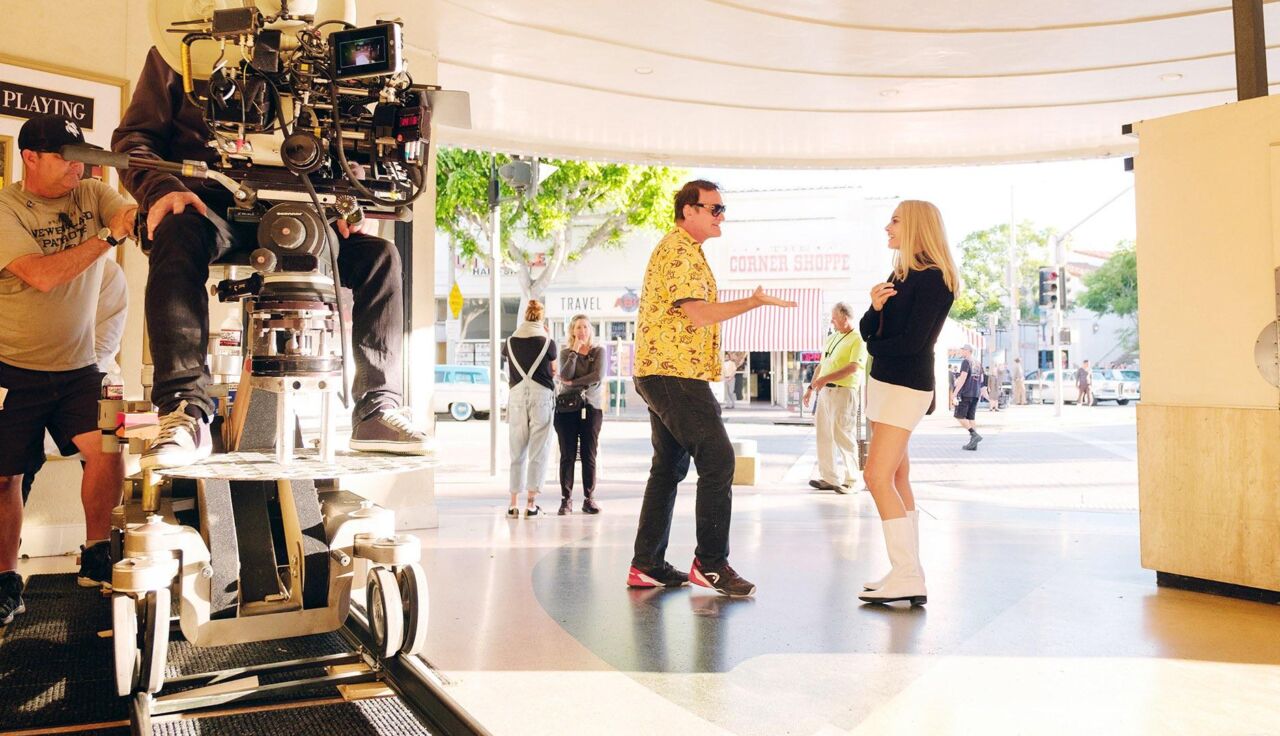
When I first saw that Ryan Murphy’s Hollywood had “borrowed” my friend and neighbor, Scotty Bowers’ story as the jumping off point for the hit Netflix series, I was disturbed. For the uninitiated, Scotty Bowers was the “Pimp to the Stars” who, in post-WWII Hollywood, catered to the proclivities of the movie industry’s biggest names from a gas station on Hollywood Blvd. His colorful life has been recounted in his bestselling autobiography, Full Service, and Matt Tyrnauer’s insightful and touching documentary, Scotty and the Secret History of Hollywood.

Unlike the Ernie West character portrayed by Dylan McDermott in Murphy’s reimagining of post-war Hollywood, Scotty was neither demanding nor in it for the money. In fact, until he died last year at the age of 96, he maintained that he never took money for the liaisons he arranged between his posse of guys and gals and Hollywood’s biggest stars. Unlike the more mature Ernie West, Scotty was just a 23-year-old Marine returning from the Pacific theater when he started pumping gas and the customers at the Richfield station on the corner of Van Ness Blvd.

The term “freely adapted” is an apt description for Ryan Murphy’s revisionist love letter to a Hollywood that never really existed, a Hollywood that might have been if there hadn’t been racism and homophobia. That Hollywood would have righted the wrongs done to the likes of Anna May Wong, the industry’s first Asian movie star, who was relegated to stereotypical Dragon Lady parts and passed over for the role that she was born to play, the Chinese farmer O-Lan, in the 1937 adaptation of Pearl S. Buck’s The Good Earth. That part went to a Caucasian actress, Luise Rainer and won her an Oscar.
Claiming that the saddest tragedy is lost potential, Mr. Murphy focuses on characters who, shackled by the system, were unable to achieve their full capacity. Actors like Hattie McDaniel who, despite being the first African American to win an Academy Award for Best Supporting Actress for her portrayal of Mammy in Gone with the Wind, was exiled to a career playing maids and servants because there were no other roles for an actress of color.
Growing up in Indiana, Mr. Murphy became obsessed with Rock Hudson. As he told Kara Swisher in a recent segment of her podcast, Recode Decode, as a child, he was watching McMillan & Wife with his grandmother when out of nowhere, she said, “He’s a homo.” He recounts looking at the screen and thinking, “Oh, he’s like me.” Seeing that the pathway to being gay and successful required hiding who you really were, he became obsessed with that idea. “If you were marginalized, gay or a person of color, you could only be allowed in the club if you towed the line and did what the white patriarchal society demanded.” Imagining what his life would have been like if, as a child, he could have watched a gay man in a gay love story that was rewarded and successful because he was authentic to who he was, he set out to create that world. The culmination of that quest just may be Hollywood. Not wanting to fall into the trap where gay people, lesbians and women of color can only achieve their goals if they pay a price, in the series he creates a utopian dreamworld that, despite his best intentions, often clashes with reality.

Take for instance his characterization of agent Henry Willson. In the Kara Swisher podcast, Mr. Murphy characterizes Willson as the Harvey Weinstein of his day, but author Robert Hofler, who literally wrote the book on Willson (The Man Who Invented Rock Hudson: The Pretty Boys and Dirty Deals of Henry Willson), begs to differ. When asked to point out the misrepresentations in the series he said, “It’s almost easier to talk about what’s right with the series. They got Willson’s eyebrows right, he did have thick eyebrows.” Hofler argues that the handsome young men that Scotty Bowers pimped and Henry Willson turned into stars were not blinkingly innocent. “They were sex workers. They knew what the game was and they played it. They exploited Henry Willson as much as he exploited them. The idea that Rock Hudson was an innocent is ridiculous.”
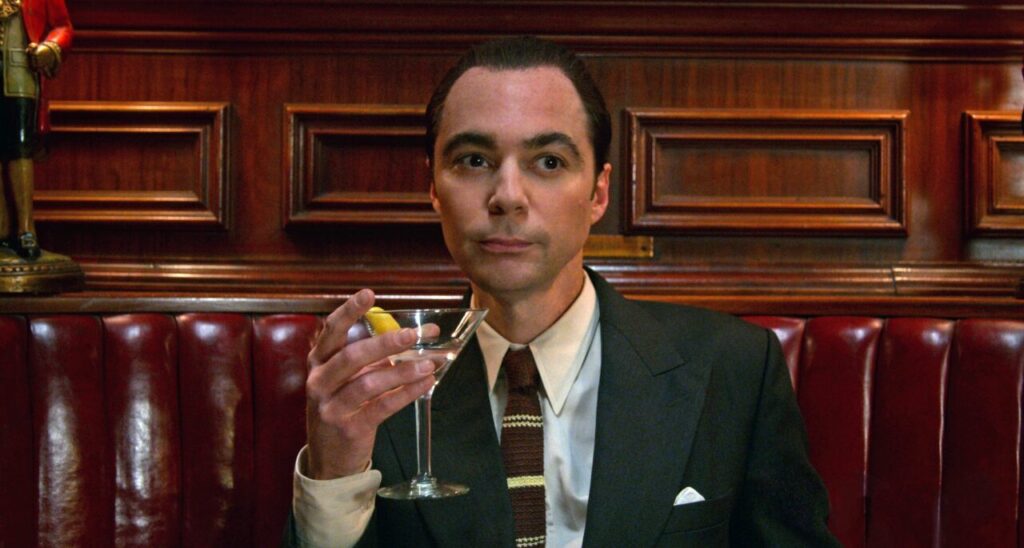
According to Hofler, after WWII Hudson had a boyfriend who had been a minor producer. When he met Rock Hudson (then named Roy Fitzgerald), “He was like, wow, I can make this guy a star.” He took him to David O. Selznick Studios in 1949 (not ‘46 as depicted in Murphy’s series), where Willson was the head of talent. After introducing the two, Rock dumped the boyfriend and signed with Willson. But Willson didn’t represent only pretty boys, he also repped Natalie Wood and was responsible for getting her the part in Rebel Without a Cause.
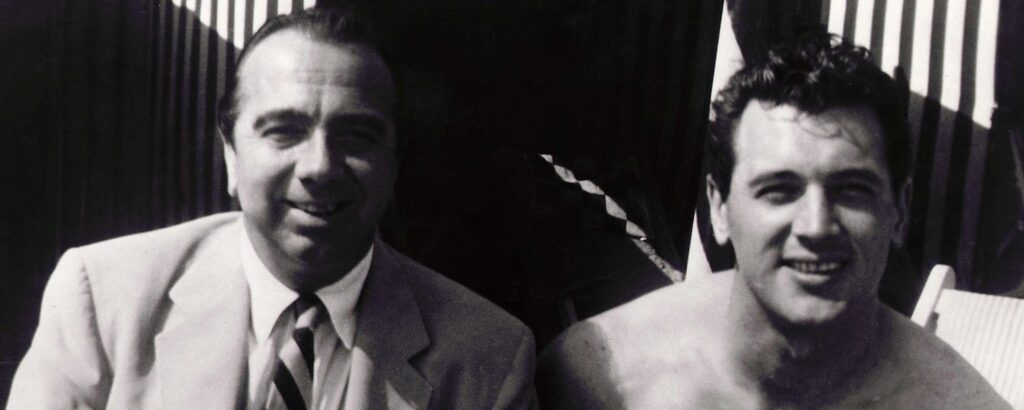
“What bothered me about the series was that Henry was demanding sex; that’s abusive,” Hofler said. “And he wasn’t abusive to his clients in public, that’s something Henry would never have done. But I heard from a number of people, if you slept with him, he got you an interview. Whatever he guaranteed you for sleeping with him, you got it. And the idea that Henry would do drag on his first date with Rock Hudson is just ridiculous. Henry did not give blow jobs, he got blow jobs, he didn’t get fucked, he fucked. Basically, he was a top with a little dick and Rock Hudson was a bottom with a big dick.”
While there’s nary a gay urban legend that doesn’t make it into the series including Tallulah Bankhead and Hattie McDaniel’s love affair, Cole Porter’s unquenchable desire for performing fellatio, and Katherine Hepburn’s penchant for female company, many people see Hollywood as anti-gay. Commenting on the series, Salah Bachir, president of Cineplex Media notes, “So many lies and distortions. It is fantasy fiction that distorts history and belittles gay and black America’s struggles in Hollywood. Rock Hudson was one of the industry’s biggest stars, not some bumbling idiot. Halle Berry was the first and only black woman to win a Best Actress Oscar…in 2002, not in 1947.”
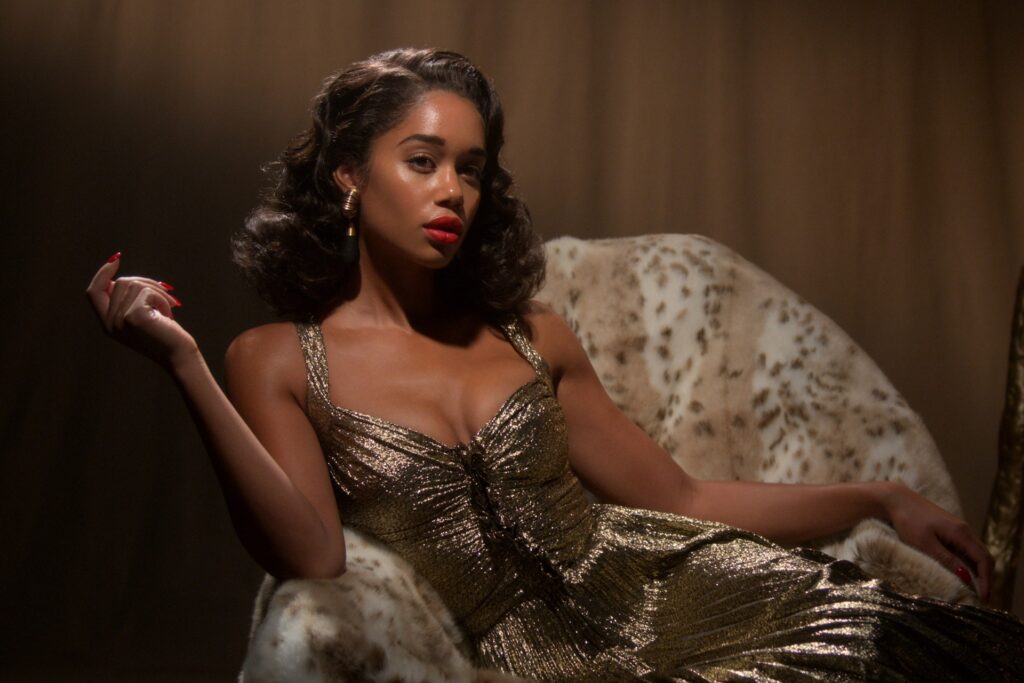

Mr. Murphy is not the only filmmaker to reimagine Hollywood’s history. One only has to look to Quentin Tarantino’s Oscar-nominated Once Upon A Time…In Hollywood for the ultimate reimagination. But unlike Hollywood, which bends the truth to fit an imaginary confection, Once Upon A Time…In Hollywood rewrites it. No stranger to rewriting history, Mr. Tarantino also gave us Inglourious Basterds whose fictional characters kill Hitler and his minions, thereby hastening the end of WWII. In Once Upon A Time… In Hollywood, he lovingly provides an accurate, if not nostalgic, homage to a bygone era in Tinseltown. An era which Joan Didion said “Ended at exactly the moment when word of the murders on Cielo Drive traveled like a brush fire through the community.” News of the film’s reimagined ending spread just as quickly when the film opened in July of 2019.
Just as I felt when I saw Scotty Bowers’ story usurped by Hollywood, I remember feeling disturbed when I watched the recreated ending of Tarantino’s film. Along with the rest of the cheering audience, I was happy to see members of the Manson family get their asses kicked, but I felt a hollow anguish thinking that the memories of Sharon Tate, Jay Sebring, Wojciech Frykowski and Abigal Folger were somehow disrespected by the re-engineered ending.

Writer Tom O’Neill, whose 20-year obsession with the Manson murders resulted in the publication of his book, Chaos: Charles Manson, the CIA and the Secret History of the Sixties (due on paperback on June 23rd), felt similarly. “When I got to the final scene when the family was massacred by the Leonardo DiCaprio and Brad Pitt characters, I was really disturbed by the audience’s reaction. The applause and the laughter at the grotesque violence seemed disrespectful to the victims and the trauma, the horrible things they all went through, and to their families. But I had a weird reversal in the final minutes of the film when Sharon Tate and the other victims greet and embrace the DiCaprio character. It made me gasp and I realized what they were trying to say is, ‘What a beautiful ending it could have been and wasn’t.’”
The danger of reconstructed history is that a lot of people actually believe it. This is illustrated by an encounter Mr. O’Neill had with a young Uber driver. “We were talking about the movie and when I told her about the ending, she said, ‘You mean Sharon Tate didn’t survive? That was made up? I had no idea.’”
Once Upon A Time…In Hollywood is not the first time the Tate-LaBianca murders have been wrongly presented. Citing Helter Skelter, written by Vincent Bugliosi who prosecuted the infamous case, Mr. O’Neill maintains, “I found out that Terry Melcher,” the prosecution’s most important witness, “had lied on the stand (with Bugliosi’s knowledge) about his relationship with the Manson family. He sugar-coated it and minimized it in very significant ways. The truth is that he was much more involved with the group. Most importantly, he was still interacting and going to see them after the murders were committed.”
“There’s one report that I was able to show that was authentic, that Melcher went to the Spahn Ranch within the week of the murders begging for Charlie’s forgiveness. I was unable to find out forgiveness for what…which implies an entirely different relationship between the two of them.”

Hollywood is paved with reimagined stories, which is why the free adaptation of reality is common fodder for the entertainment business. It provides wonderful narratives regardless of how accurate they are. But audiences beware: the guilty pleasure you’re watching may be guilty of bending the truth and you may be buying into the fantasy.

